Guide to Propagating String of Pearls from Cuttings
The String of Pearls ( Senecio rowleyanus ) is a charming and popular succulent known for its unique cascading strands of pearl-like leaves. Propagating this delightful plant from cuttings is a simple and rewarding process, allowing you to easily expand your collection, share with friends, or even rejuvenate a leggy mother plant. This guide will walk you through everything you need to know in easy-to-follow steps.
Why Propagate String of Pearls?
There are several compelling reasons to propagate your String of Pearls:
- Expand Your Collection: Easily create new plants without purchasing them.
- Share with Others: Propagated cuttings make thoughtful and unique gifts.
- Rejuvenate Leggy Plants: Encourage bushier growth in the mother plant by taking cuttings.
- Save Damaged Strands: If a section of your plant is damaged, you can propagate the healthy parts.
- It’s Fun and Rewarding! Witnessing new roots develop is a satisfying experience for any plant lover.
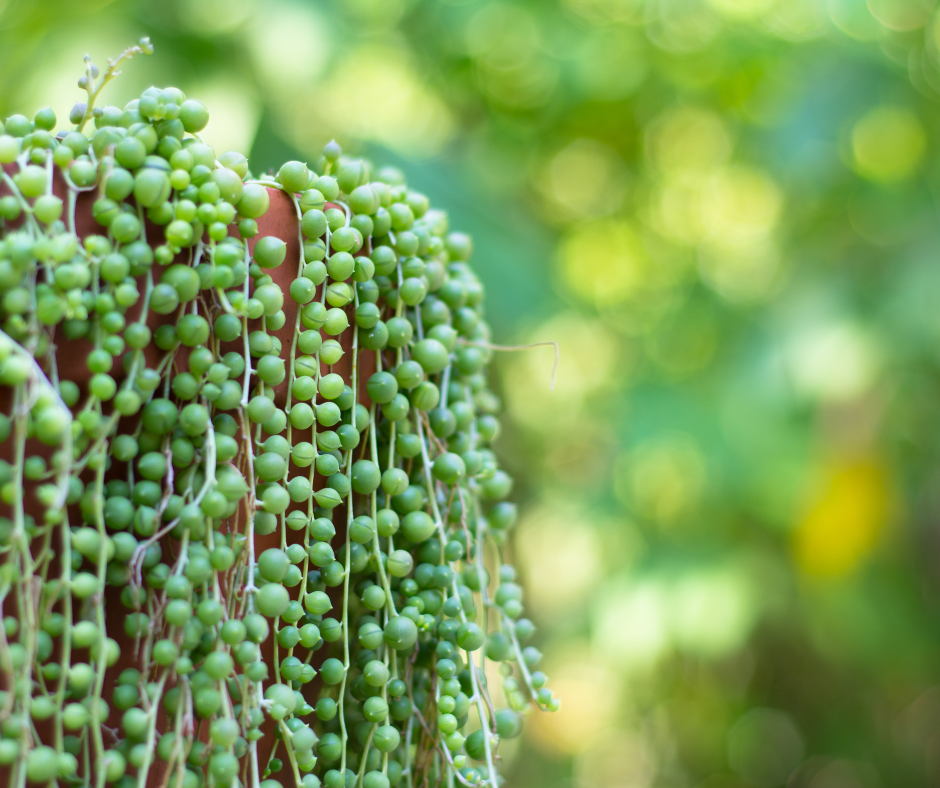
Gathering Your Supplies: What You’ll Need
Before you begin, gather these essential supplies:
- Healthy String of Pearls Plant: Choose a healthy mother plant with mature strands.
- Sharp, Clean Shears or Scissors: Sterilize them with rubbing alcohol to prevent infection.
- Small Pots with Drainage Holes: Terra cotta or plastic pots work well.
- Well-Draining Soil Mix: A mix specifically for succulents or cacti is ideal. You can also amend regular potting soil with perlite or sand.
- Watering Can or Spray Bottle: For gentle watering.
- Rooting Hormone (Optional): This can encourage faster root development, but it’s not strictly necessary.
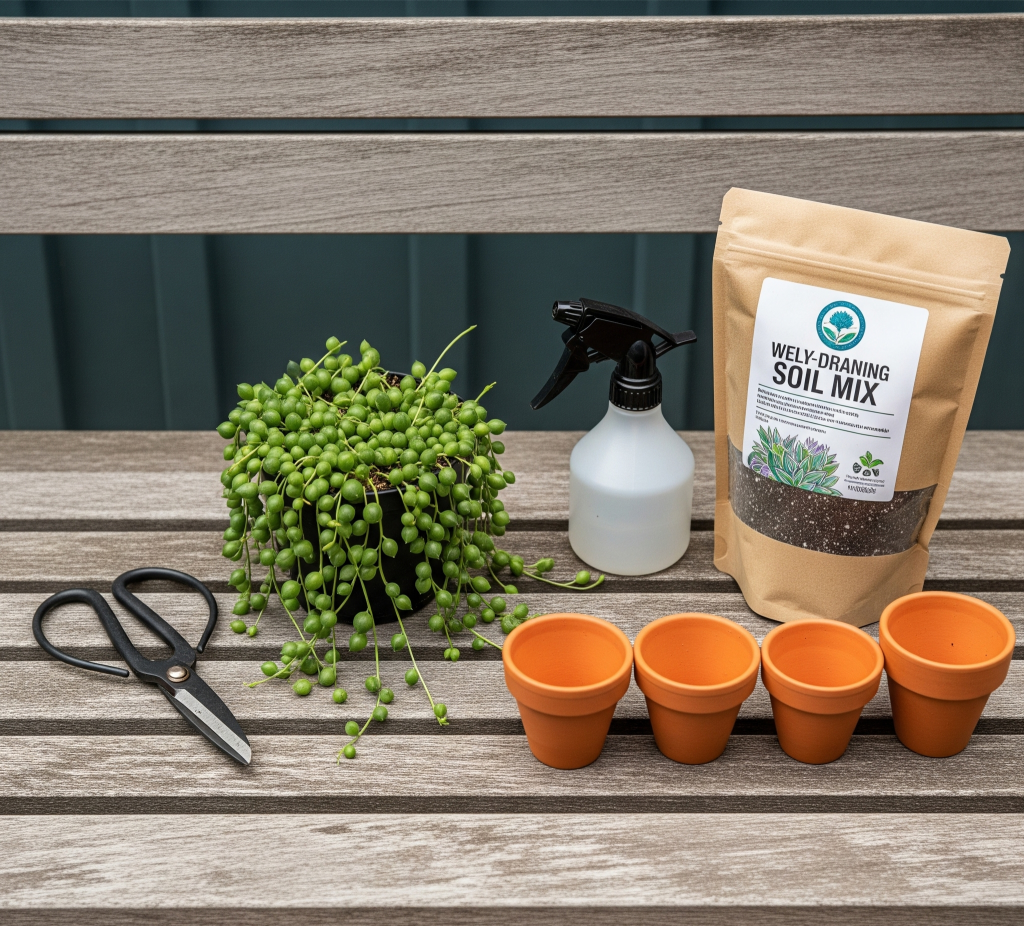
Preparing Your Cuttings for Success
Making the Cut: Where and How
- Identify Healthy Strands: Choose healthy, plump strands that are at least a few inches long.
- Locate Nodes: Look for the small points along the stem where the leaves (pearls) grow. These nodes are where new roots will emerge.
- Make the Cut: Using your clean, sharp shears, make a clean cut just below a node. You can take cuttings that are several inches long, containing multiple nodes. Remove the bottom few “pearls” from each cutting to expose the stem. This is where the roots will sprout.
Callousing: The Essential Step (for soil propagation)
For successful propagation in soil, it’s beneficial to allow the cut ends of your cuttings to dry and callus over for a few hours or even overnight. This helps prevent rot when the cuttings are placed in soil. Simply lay the cuttings on a paper towel in a dry, shaded area. This step is less critical for water propagation.
Step-by-Step Propagation Methods
Here are two popular and effective methods for propagating String of Pearls from cuttings:
Method 1: Propagating in Soil
- Prepare the Pot: Fill your small pot with well-draining succulent or cactus mix.
- Plant the Cuttings: Make a small indentation in the soil and gently insert the cut end of your calloused cutting into the soil, ensuring that at least one or two nodes are buried. You can propagate multiple cuttings in the same pot, leaving some space between them.
- Secure the Cuttings (Optional): To ensure good contact with the soil, you can gently lay the length of the cutting on the soil surface and use small U-shaped hairpins or paper clips to hold the nodes in contact with the soil. This encourages rooting along the stem.
- Water Lightly: Water the soil lightly, just enough to moisten it. Avoid overwatering, which can lead to rot.
- Provide Indirect Light: Place the pot in a location with bright, indirect sunlight. Avoid direct, intense sun, which can scorch the cuttings.
- Maintain Humidity (Optional): You can increase humidity by placing a clear plastic bag loosely over the pot or using a humidity dome. Remove it for a few hours each day to allow for air circulation and prevent mold growth.
- Wait for Roots to Develop: Roots typically form within a few weeks. You can gently tug on a cutting to check for resistance, which indicates root growth.
- Care for New Plants: Once the cuttings have established roots, care for them as you would a mature String of Pearls plant.
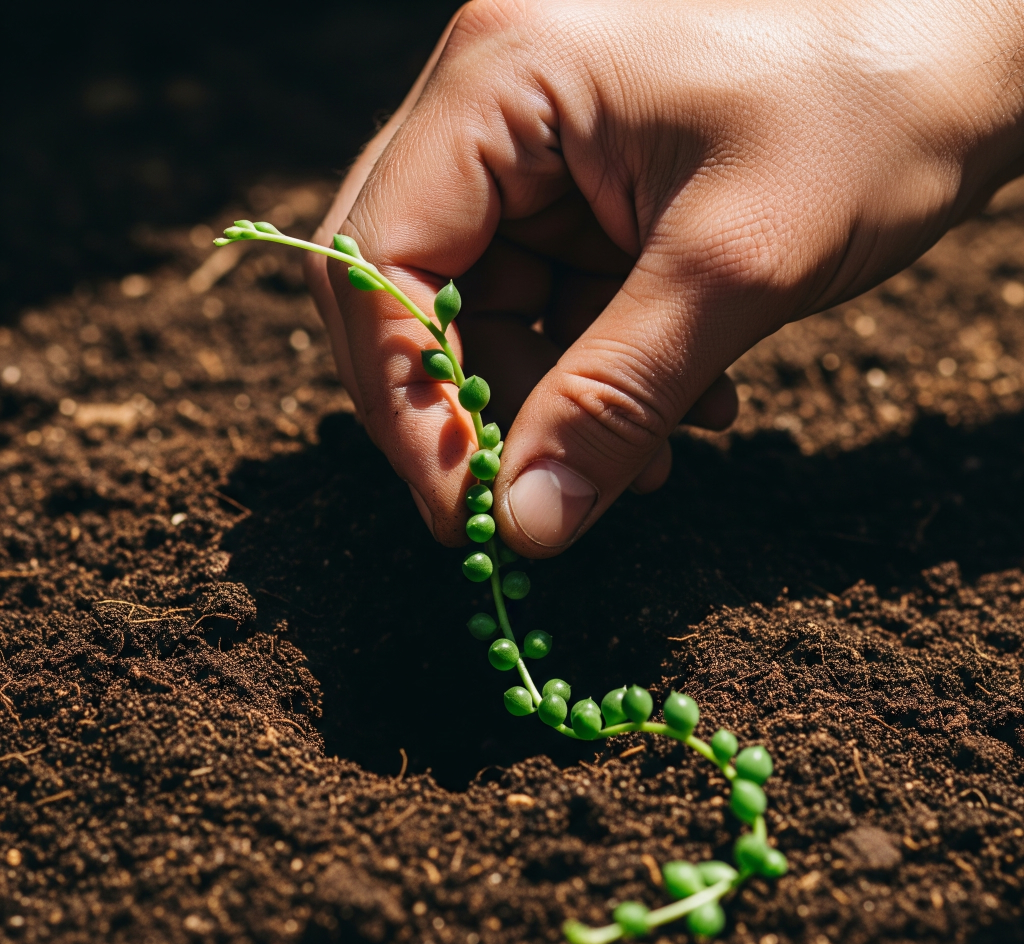
Method 2: Propagating in Water
- Prepare a Container: Fill a small, clean glass or jar with water.
- Place the Cuttings: Place the cut ends of your String of Pearls cuttings in the water, ensuring that at least one node is submerged. Avoid submerging the “pearls” themselves, as this can lead to rot.
- Provide Indirect Light: Place the glass in a location with bright, indirect sunlight.
- Change Water Regularly: Change the water every few days to keep it fresh and prevent bacterial growth.
- Observe Root Growth: You should start to see small white roots emerging from the submerged nodes within a week or two.
- Plant in Soil: Once the roots are about an inch long, carefully plant the cuttings in a small pot filled with well-draining succulent mix.
- Water Gently: Water the soil lightly after planting.
- Transition Carefully: For the first week or two after planting, keep the soil slightly more moist than usual to help the new roots acclimate to the soil. Gradually reduce watering to the typical String of Pearls watering schedule.
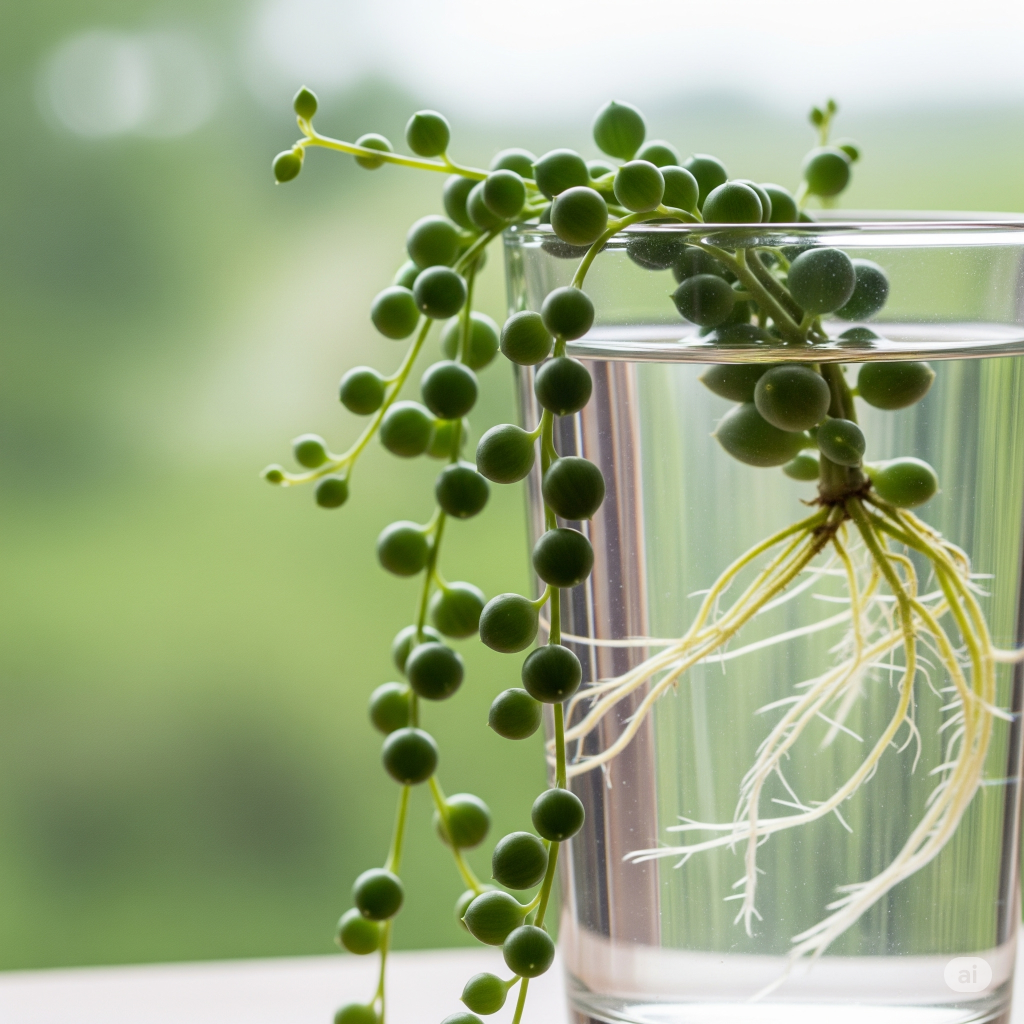
Caring for Your New String of Pearls Cuttings
Once your cuttings have developed roots, it’s crucial to provide the right care to ensure they thrive:
- Light: Provide bright, indirect sunlight. Avoid intense, direct sun, especially during the hottest part of the day.
- Watering: Allow the soil to dry out completely between waterings. Overwatering is a common cause of root rot in String of Pearls. Water sparingly, especially during the initial establishment period.
- Soil: Ensure your plants are in well-draining succulent or cactus mix.
- Temperature and Humidity: String of Pearls prefer average room temperatures and moderate humidity. Avoid extreme temperatures and drafts.
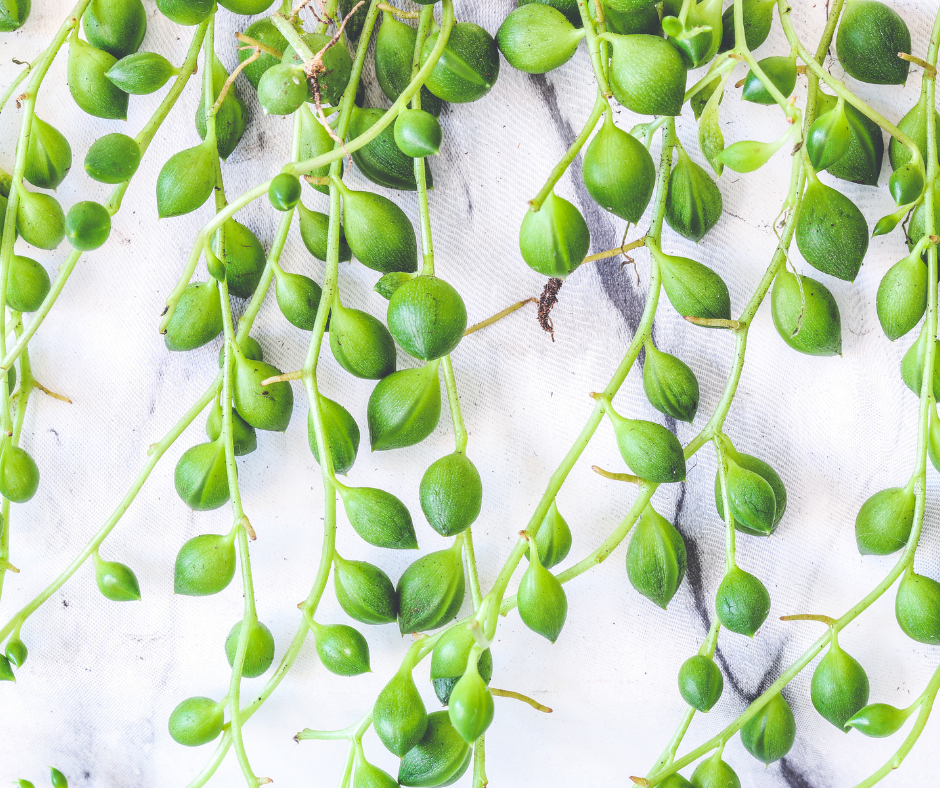
Common Problems and Troubleshooting
While propagating String of Pearls is generally easy, you might encounter a few common issues:
- Why Are My Cuttings Rotting? Overwatering is the most likely culprit. Ensure your soil is well-draining and allow it to dry out between waterings. If propagating in water, ensure only the stem (not the pearls) is submerged and change the water regularly.
- Cuttings Not Rooting? Be patient! Root development can take a few weeks. Ensure your cuttings are receiving adequate indirect light and the temperature is not too cold. You can also try using a rooting hormone.
- Shriveling Pearls? This could be a sign of underwatering or, conversely, root rot preventing the uptake of water. Check the soil moisture and ensure it’s not constantly wet. If propagating in water, ensure the cut end is submerged.
With a little patience and the right techniques, you’ll be well on your way to successfully propagating your String of Pearls from cuttings and enjoying more of these charming succulents!
